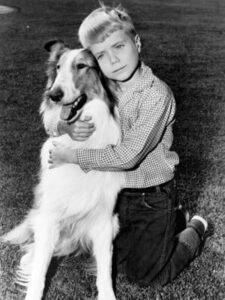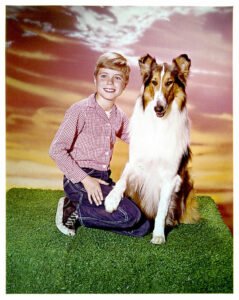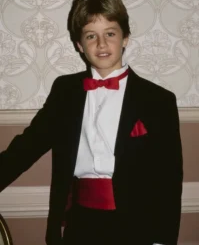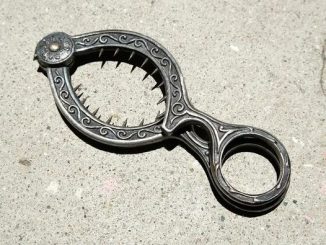For almost twenty years, many of us remember watching the adventures of TV’s most famous dog – Lassie.
This beloved Rough Collie and her human friends were on our screens for 17 seasons, from 1954 to 1973. The show even switched from black and white to color in the 1960s.
But one of the most unforgettable parts of the show was when 7-year-old Timmy Martin joined in the fourth season. Timmy and his family adopted Lassie, creating some of the most memorable moments in the series.

Jon Provost, who played Timmy on *Lassie*, just celebrated his 74th birthday. He looks back fondly on his time filming with his four-legged co-star and remembers how Hollywood discovered him at only 3 years old.
The actor, born in Los Angeles, recalls that when he was 3, his mom took him to an audition for a Jane Wyman movie. She was a huge fan and just wanted her autograph. But out of 200 kids, Jon got the part.
Acting wasn’t something that ran in the family. Jon’s father had a completely different job—he was an aeronautical engineer.
“My parents weren’t Hollywood people,” Jon said. “My father is from Alabama, and my mother is from Texas.”

At age 4, Jon Provost landed a role in a movie with Grace Kelly and Bing Crosby.
“I didn’t have an agent at the time. After that, I got one, and it led to more movies like *The Country Girl* with Bing Crosby and Grace Kelly. I did about 12 movies before I started *Lassie*,” he told Fox News.
Jon also shared memories of working with the three different male dogs who played the role of Lassie. He said he formed a special bond with the last dog who portrayed the famous female collie.

“I did the show for seven years, filming 249 half-hour episodes. I worked with three different Lassies,” Jon Provost told Fox News.
He shared that the last dog he worked with was by his side for five years straight. “We grew up together. For five years, we saw each other five days a week, and sometimes even on weekends.”
Jon also revealed how well-behaved the dog was on set. “The actors made more mistakes than the dog,” he laughed. “They were more of a problem than Lassie.”

After leaving *Lassie* at 14 years old, Jon Provost went on to star with big names like Natalie Wood and Kurt Russell. Despite growing up in Hollywood, he avoided the common pitfalls many child actors face.
“My parents let me pretty much do what I wanted to do. I didn’t have to take a job,” Jon said.
Looking back, he added, “When I left Hollywood, I thought it was good that I did.”

Today, Jon lives away from the spotlight in Northern California but still receives fan mail from his time on *Lassie*. In 1994, he was honored with a star on the Hollywood Walk of Fame.
The character Lassie became so famous that she even had her own radio series.
In 1979, Jon married Sandy Goosens, and they had two children, Ryan and Katie. However, after 14 years of marriage, they divorced in December 1993.
In 1999, Jon found love again when he married Laurie Jacobson, a well-known researcher and author.
I’ve always been a big fan of the adventures this sweet duo went on. And with a moral in every episode, it was the perfect show for kids.
Please share this with all the *Lassie* fans you know.
Carville Foresees Trump’s Downfall, Warns White House Is “Hanging by a Thread”
Carville Predicts Trump’s Downfall: “The White House Will Collapse in Weeks”
James Carville isn’t mincing words—he’s convinced Donald Trump’s presidency is on the brink. The longtime Democratic strategist believes the combination of plummeting approval ratings, abrupt firings, and a flurry of executive orders will lead to an imminent meltdown in the administration.

Why Carville Thinks Trump’s Days Are Numbered
At 80 years old, Carville has seen political storms before, and he’s certain this one is different. He points to Trump’s approval rating, which he says has nosedived from the low 50s to the upper 30s in record time. More importantly, he predicts that key Republican allies will start distancing themselves—especially if economic turmoil follows the budget-cutting policies of Elon Musk’s Department of Government Efficiency (DOGE). According to Carville, Democrats don’t even need to push—the White House could crumble under its own weight if moderate Republicans begin to waver.
Trump Fires Back
Unsurprisingly, Trump isn’t letting Carville’s comments slide. Taking to Truth Social, he dismissed the strategist as a “loser” who refuses to acknowledge his supposed “best polling numbers.” But Carville isn’t backing down. He doubled down in follow-up interviews, insisting that the administration is in free fall and could hit rock bottom within a month.
So, is the White House really on the verge of collapse, or is this just another heated political exchange? One thing’s for sure—Carville’s prediction is fueling intense debate across cable news and social media.
Share this article with your friends and family to keep the conversation going!




Leave a Reply